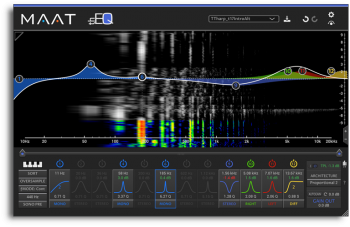MAAT thEQblue v2.1.0 Incl Emulator-R2R

DATE : 2020.05.31 | NUMBER : R2R-9123 | SiZE : 24.46 MB
PLATFORM : WiN32/64 - VST/VST3/AAX
Beautiful analog architectures, twelve in all, that will take your work out of the ordinary.
Why develop yet one more parametric equalizer (PEQ) when there’s already hundreds on the market? The answer is simple…’Cuz there was room for improvement! It was customers of the original LinearPhase PEQ Red and Orange who asked Algorithmix to develop a classic EQ, for recording and mixing tasks, with unparalleled purity and transparency. Over several years, our Dr. Christoph closely analyzed many of the best out there, and compiled a vast knowledgebase of analog EQ best practices. Cherry picking from that, he implemented not just one or two, but an entire collection of trad minimal phase EQs. The result? A distillation of analog antecedents, while others are based on new ideas.
We know you’ll enjoy our dozen variations of blue, newly revised by MAAT, and will find your favorite sound. We’ve also added subtle but important touches, like the ability to freely assign Sections to either stereo [left/right] or sum/difference [L+R/L-R] at the same time, and to “group” all Sections and make a global gain change without disturbing the relationship of individual Sections.
The Twelve
We wanted to lift analog to another level, so we reverse engineered a variety of well respected hardware EQs, creating idealized digital versions from that inspiration. Rather than models or simulations that carry analog baggage, thEQblue has no noise, distortion or other secondary effects inherited from analog.
thEQblue is the most complete collection of classic equalizer architectures ever assembled into one package. You get precise, idealized examples of legendary analog equalizer circuitry, complemented by progressive new models. Whether it’s vintage, modern, or experimental, thEQblue is a sonic sandbox for every mixing and mastering engineer to play in.
home page
https://www.maat.digital/theqblue/download from free file storage
Enjoy the DLL level emulator work of Nalpeiron/Zentitle!
